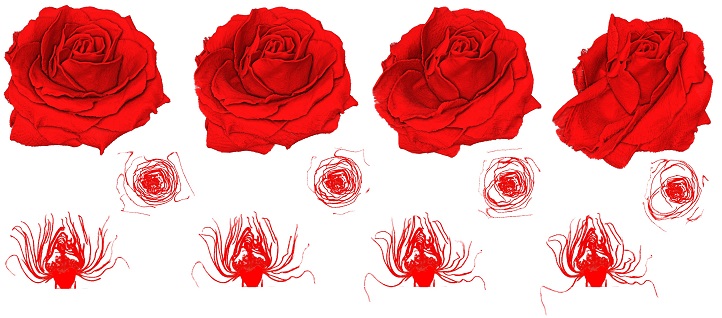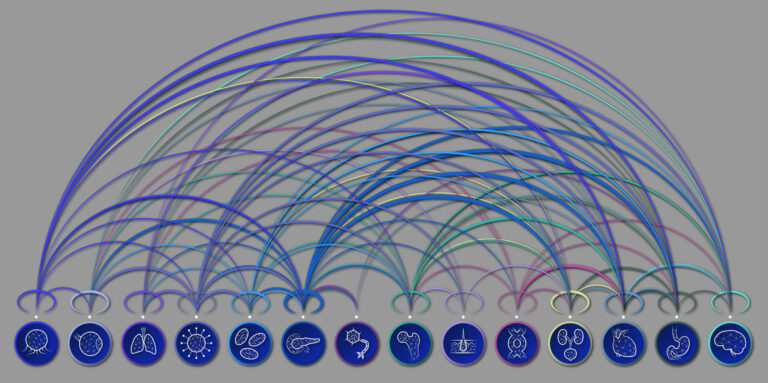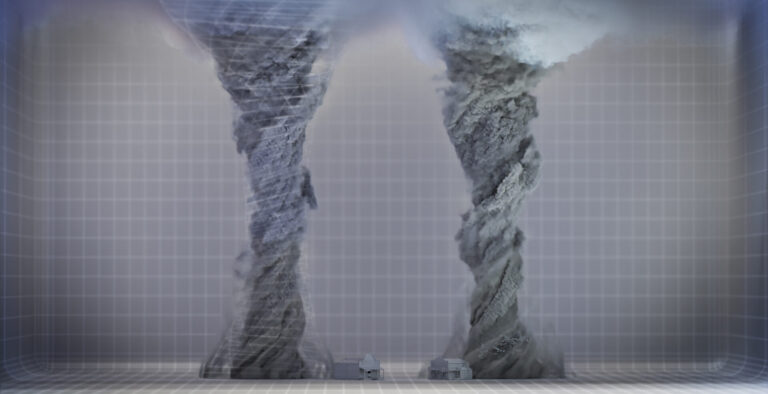Computer Science
Scanning in the fourth dimension
A novel imaging method makes it possible to capture object deformation in three dimensions over time with unprecedented accuracy.

A 360-degree scan is completed using each round offset to enhance information capture.
Three-dimensional (3D) computed tomography is a widely used technology that visualizes an object’s external and internal structure by assembling a series of two-dimensional images taken sequentially across or around it. However, as anyone who has had a medical magnetic resonance imaging scan will recall, this type of 3D reconstruction requires the subject to be motionless throughout the capture process, which can take minutes. Capturing a 3D structure that changes or deforms over time is much more difficult, and existing approaches often yield reconstructions marred by image artifacts and partial surfaces.

Conventional capture methods result in artifacts and partial surfaces (b). This is much improved with the new capture method (c). Then, by propagating information forward and backward in time using a flow field to encode the deformation, a vastly improved reconstruction can be obtained for a given time point (d).
Guangming Zang, Ramzi Idoughi and their colleagues, under the leadership of Wolfgang Heidrich at KAUST, have developed a novel four-dimensional imaging method that vastly improves the quality of such space-time tomography for rapidly deforming objects.
“The primary challenge is when the deformation is so fast that the scanner can only capture a few images before the deformation becomes significant,” explains Zang. “The problem is then to reconstruct highly detailed 3D objects given only a few projections with a lot less information than would be available when reconstructing static objects.”
The team tackled the challenge in two parts. First, they modified the capture sequence to have a better distribution of scans over time. Then, they created an algorithm that allows the reconstruction at a given time point by using information from previous and subsequent acquisition steps.
“This is a major step toward making 3D tomography useful for probing internal structures of objects when changes during scanning cannot be avoided,” says Zang.

The deformation of the object over time can then be reconstructed with high fidelity. This method was used to capture a wide range of dynamic phenomena, such as dehydration and rehydration of organic objects, rising dough and fluid flows.
All figures were reproduced from reference 1 © 2018 KAUST
Space-time tomography for continuously deforming objects.
© KAUST
References
You might also like

Computer Science
Sweat-sniffing sensor could make workouts smarter

Computer Science
A blindfold approach improves machine learning privacy

Computer Science
AI tool maps hidden links between diseases

Bioscience
The theory of everything that wasn’t

Computer Science
A new path to high-efficiency micro-LEDs

Computer Science
Cyclones meet their mathematical match

Applied Physics
Onward and upward to smaller faster devices

Computer Science



